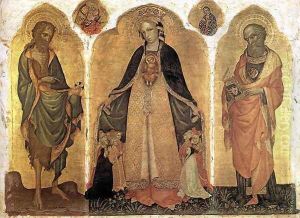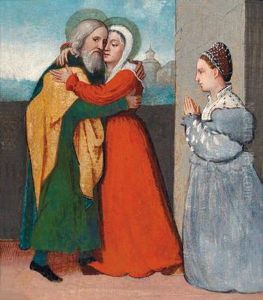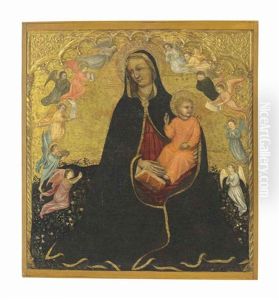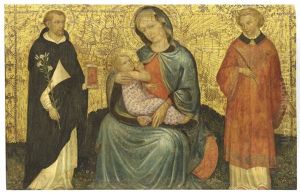Jacobello Del Fiore Paintings
Jacobello Del Fiore was an Italian painter of the late Gothic period, flourishing in the early 15th century, primarily in Venice. His exact birth date is not known, but it is speculated to be around the year 1370. Del Fiore's work is significant for its contribution to the development of Venetian art, bridging the transition from medieval to Renaissance styles. He was known for his elaborate altarpieces and detailed narrative scenes, often characterized by their vibrant colors and gold leaf backgrounds, which became a hallmark of Venetian painting.
Jacobello's career is marked by his deep involvement in the artistic scene of Venice. He became the head of the Venetian painters' guild in 1415, a position that underscored his importance and influence in the local art community. During his tenure, he worked on numerous commissions for churches and other institutions, showcasing his ability to blend traditional Gothic elements with emerging Renaissance ideas and techniques.
One of his most notable works is the 'Justice of Trajan and Herkinbald' triptych, which showcases his mastery over narrative storytelling and intricate detail. This work, filled with elaborate figures and a complex composition, exemplifies the transition in European art from the medieval focus on spiritual themes to a more human-centered Renaissance perspective.
Despite his influential role in Venetian art, much of Del Fiore's life and work remain shrouded in mystery, with only a handful of his pieces surviving to the present day. His legacy, however, is seen in the way he laid the groundwork for subsequent generations of Venetian artists, including the introduction of more naturalistic elements and a brighter color palette that would come to define the Venetian Renaissance.
Jacobello Del Fiore passed away in 1439, leaving behind a body of work that, while limited, is celebrated for its contribution to the evolution of Venetian painting. His style served as a crucial link between the Gothic traditions of the Middle Ages and the burgeoning Renaissance movement, marking him as a key figure in the history of Italian art.
























